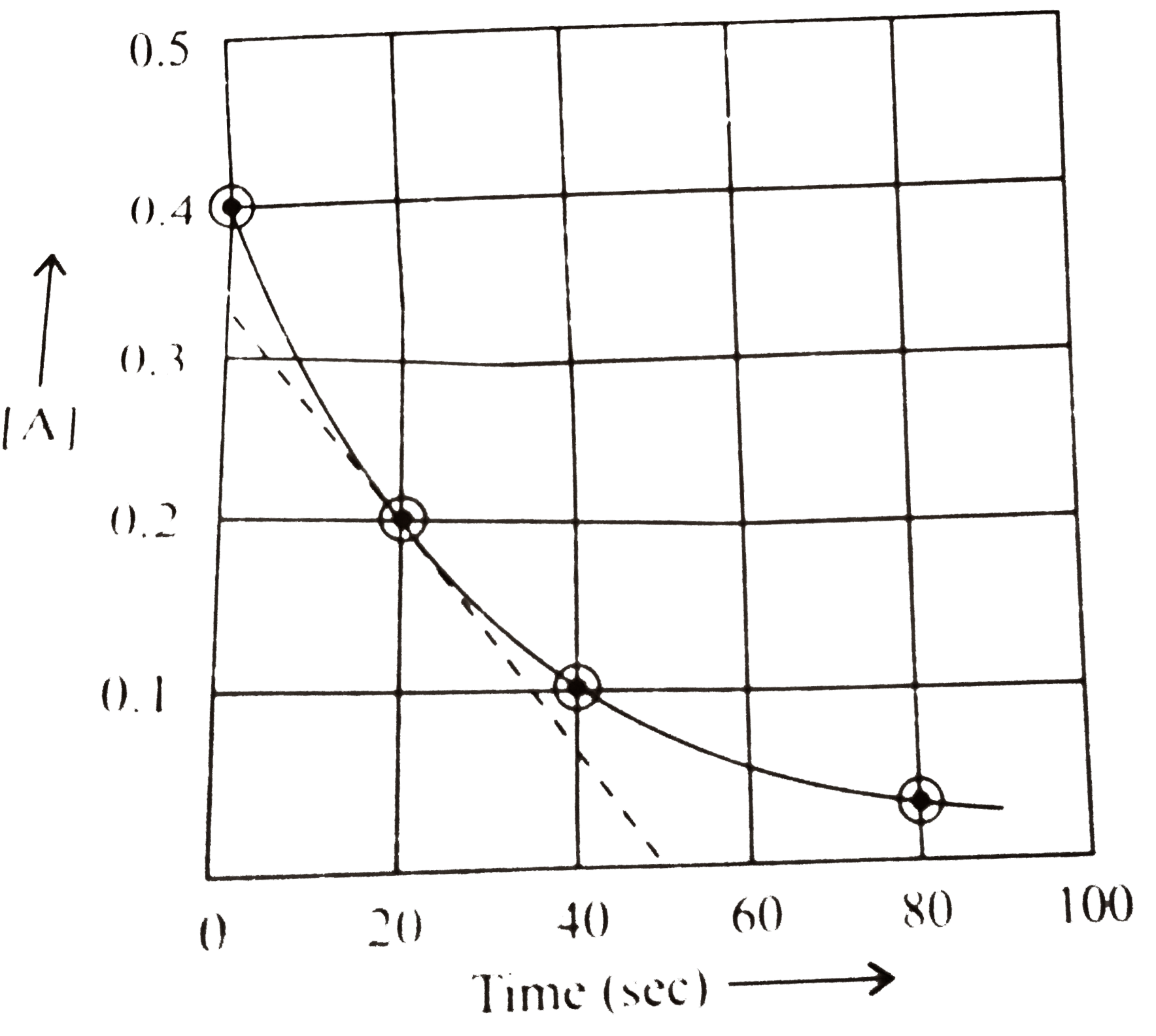Complete Solutions to Exercises Multiple Correct of chapter CHEMICAL KINETICS of Class 12 book with complete answers and questions
| Class 12 | CHEMISTRY |
| Chapter | CHEMICAL KINETICS |
| CENGAGE CHEMISTRY | Exercises Multiple Correct |
| Number Of Questions | 33 |
| Academic Year | 2023-24 |
Which of the following is (are) not correct for a first order reaction?
01:56View SolutionWhich of the following statement is (are) correct ?
01:56View SolutionTaking the reaction, `A +2B rarr` Products to be of second order, which of the following is/are the correct rate law expresisons `(s)`?
02:55View SolutionWhich of the following statements `(s)` are not correct?
04:36View SolutionConversion of ice to solid is endothermic reaction. True/False?
01:34View SolutionThe rate constant of a reaction is given by `k = 2.1 xx 10^(10) exp(-2700//RT)`. It means that
04:42View SolutionIn acidic medium the rate of reaction between `[BrO_(3)^(-)]` and `[Br^(-)]` ions given by the expression
`- (d[BrO_(3)^(-)])/(dt) = k [BrO_(3)^(-)][Br^(-)][H^(+)]^(2)`
It means
(i) rate of constant of the reaction depends upon the concentration of `H^(+)` ions
(ii) rate of reaction is independent of the concentration of acid added
(iii) the change in pH of the solution will affect the rate of reaction
(iv) doubling the concentration of `H^(+)` ions will increase the reactions rate by 4 items.03:59View SolutionWhich of the following relations are correct if `Delta H` represents only magnitude ?
02:09View SolutionWhich of the following graphs represents zero order if
`A rarr P` At `t = 0 rArr [A]_(0)` At `t = t rArr [A]_(t)`03:25View SolutionWhich one is correct according to the colliison theory of the rate of reaction?
04:45View SolutionThe rate expresison for the reaction:
`NH_(4)CNO hArr NH_(2)CONH_(2)` can be derived form the mechanism:
(i) `NH_(4)CNO underset(k_(2))overset(k_(1))hArr NH_(4)NCO ("Fast")`
(ii) `NH_(4)CNO overset(k_(3))rarrNH_(3) + HNCO` ("fast")
(iii) `NH_(3)+HNCo overset(k_(4))rarr NH_(2)CONH_(2)` (Slow)
Which of the following statement `(s)` is/are correct about the rate expresison?
a.`(d_(["urea]))/(dt) = (k_(1)k_(3))/(k_(2))[NH_(4)NCO]`
b. `(d_(["urea]))/(dt) = (k_(1)k_(3))/(k_(2)k_(4))[NH_(4)NCO]`
c.`(d_(["urea]))/(dt) = k[NH_(4)NCO]`
d.`(d_(["urea]))/(dt) = (k_(1) xx k_(2))/(k_(3) xx k_(4))[NH_(4)NCO]`05:47View SolutionAccording to the colliison theory, most molecular colliisons do not lead to reaction. Which of the following is`//are` necessary for colliisons to successfully lead to reaction ?
02:32View SolutionIndentify the true statement(s)
02:11View SolutionWhich of the following statement (s) is/are correct?
03:17View SolutionWhich of the following plots are correctly made for the reaction `nA hArr (A)_(n)` if it obeys first order reaction?
02:51View SolutionRate constant `k` varies with temperature by equation `log k (min^(-1)) = log 5 - (2000 kcal)/(RT xx 2.303)`. We can conclude that
02:03View SolutionWhich of the following reaction `(s)` is `//` are of the first order ?
02:39View SolutionThe basis theory behind Arrhenius' equation is that
03:08View SolutionIn the Arrhenius equation, `k = A exp^(-Ea//RT)`, A may be termed as the rate constant at…………. .
02:22View SolutionSelect the correct statement
03:35View SolutionFor a gaseous reaction: `A(g) rarr B(g)`, the rate expresison may be given as
03:34View SolutionThe rate of formation of `C_(6)H_(6)+3H_(2) underset(k_(b))overset(k_(f))hArr C_(6)H_(12)` for the forward reaction is first order with respect to `C_(6)H_(6)` and `H_(12)` each. Which one of the options is/are correct?
10:18View SolutionA certain reaction `A rarr B` follows the given concentration (Molarity)-time graph. Which of the following statements is/are true?

(a)The reaction is second order with respect to A .
(b) The rate for this reaction at 20 s will be 7 × 10 − 3 M s − 1
(c) The rate for this reaction at 80 s will be 1.75 × 10 − 3 M s − 1
(d) The [ B ] will be 0.35 M at t = 60 s .05:41View SolutionFor a first order reaction,
03:21View SolutionWhich of the following statement `(s)` is/are correct
06:01View SolutionFor the reaction N_(2)(g)+3H_(2)(g) rarr 2NH_(3)(g), under certain conditions of temperature and partial pressure of the reactants, the rate of formation of NH_(3) is 0.001 kg h^(-1). The same rate of converison of hydrogen under the same condition is................kg h^(-1).
03:34View SolutionThe distribution of molecular kinetic energy at two temperature is as shown in the following graph:

Which is the following concluison is/are correct?05:05View SolutionWhich of the following isomerization reactions is/are of the first order?
02:32View SolutionWhich of the following is/are examples of unimolecular reactions?
01:43View Solution`Zn+2H^(o+)rarrZn^(2+)+H_(2)`
The half-life periof is independent of the concentration of zinc at constant `pH`. For the constant concentration of `Zn`, the rate becomes `100` times when `pH` is decreased form `3` to `2`. Hence,07:13View SolutionWhich of the following is/are examples of pseudo unimolecular reactions?
03:13View SolutionIn which of the following ways does an activated complex differ form an ordinary molecule?
02:42View SolutionWhich of the following statements is/are correct?
03:59View Solution
Exercises Multiple Correct questions and complete solutions for chapter CHEMICAL KINETICS of CENGAGE CHEMISTRY (ENGLISH) of Class 12
All Exercises from CENGAGE CHEMISTRY Class 12 CHEMISTRY CHEMICAL KINETICS
- Archives Fill In The Blanks
- Archives Integer
- Archives Multiple Correct
- Archives Single Correct
- Archives Subjective
- Archives True/False
- Ex 4.1 (Objective)
- Ex 4.2 (Objective)
- Ex 4.3 (Objective)
- Ex 4.3 More Than One Correct
- Ex4.4 Objective
- Exercises Assertion-Reasoning
- Exercises Fill In The Blanks
- Exercises Integer
- Exercises Linked Comprehension
- Exercises Multiple Correct
- Exercises Single Correct
- Exercises True/False
- Illustration
- Solved Example
